Watergate Hearings Day 3: James McCord and John J. Caulfield (1973-05-22)
The dark side of history: https://thememoryhole.substack.com/
John J. Caulfield (March 12, 1929 – June 17, 2012)[1] was an American security operative and law enforcement officer. He was a member of the Richard Nixon administration around the time of the Watergate Scandal, though he avoided prosecution.
Biography
Caulfield was born in The Bronx, New York City. He attended Wake Forest University on a basketball scholarship as well as Fordham University and the John Jay College of Criminal Justice. He served in the United States Army during the Korean War. From 1953 to 1968, he was an officer with the New York City Police Department (NYPD).[2]
In 1968, Caulfield left the NYPD and joined the Nixon administration as a security operative. He was involved in Operation Sandwedge with H. R. Haldeman and John Ehrlichman, where he was tasked with setting up a clandestine intelligence-gathering operation against the political enemies of the Nixon administration. At one point, Caulfield suggested firebombing the Brookings Institution, a think tank critical of Nixon.[1] For his part, Caulfield said the idea had originated not with him but with Charles Colson, special counsel to the president, and that he, Caulfield, had actually pleaded with White House Counsel John Dean to get him out of the "asinine" assignment. Colson denied coming up with the idea, although an associate said he might have suggested it as a "joke." In any event, the plan was dropped. [3]
In 1972, Caulfield was appointed as assistant director of criminal enforcement at the U.S. Bureau of Alcohol, Tobacco, Firearms and Explosives (ATF). In 1973, while at the ATF, Caulfield was sent by the Nixon administration to offer clemency to Watergate Hotel burglar James W. McCord Jr. in an attempt to prevent McCord from testifying against the administration. McCord was eventually sentenced to prison for his involvement in Watergate. Caulfield testified before the United States Senate Watergate Committee but avoided prosecution. Before testifying, he resigned from the ATF after serving only nine months.[2]
Caulfield's later career was as an executive at an aerosol valve plant in Yonkers, New York. The plant was owned by Robert Abplanalp, a close friend of Nixon's. Caulfield died in 2012 in Vero Beach, Florida, survived by his wife, three sons, and nine grandchildren.[2]
References
"Jack Caulfield". The Telegraph. July 11, 2012.
Martin, Douglas (June 22, 2012). "Jack Caulfield, Bearer of a Watergate Message, Dies at 83". The New York Times. Retrieved November 3, 2016.
Nightmare: The Underside of the Nixon Years by J. Anthony Lukas, Athens, Ohio: Ohio University Press, 1999, ISBN 0-8214-1287-6, pp. 89-90.
Authority control databases Edit this at Wikidata
NARA
Categories:
Fordham University alumniWake Forest University alumniJohn Jay College of Criminal Justice alumniATF agentsMilitary personnel from New York CityNew York City Police Department officersNixon administration personnelNixon administration personnel involved in the Watergate scandal1929 births2012 deaths
Eugenio Rolando Martínez Careaga[1] (alias Musculito, July 8, 1922 – January 30, 2021) was a member of the anti-Castro movement in the early 1960s, and later was one of the five men recruited by G. Gordon Liddy and E. Howard Hunt in 1972 for the Memorial Day weekend Watergate burglary at the Democratic National Committee (DNC) headquarters in Washington, D.C. He later worked as a real estate agent.[2]
Weeks after the initial break-in, on June 17, 1972, the men were arrested by District of Columbia Police inside DNC headquarters during what they said was a second entry into the building to correct problems with the first break-in. Martinez and the others were convicted in the ensuing Watergate scandal. The others were Frank Sturgis, Virgilio Gonzalez, Bernard Barker and James McCord. After completing his 15 month prison term,[3] Martinez was pardoned by President Ronald Reagan in 1983.[4] Martínez was the only person aside from Nixon to receive a pardon for his role in the scandal.[3]
Martinez was portrayed in All the President's Men, the 1976 film retelling the events of the Watergate scandal, by Dominic Chianese.
On August 31, 2016, the conservative watchdog group Judicial Watch obtained CIA internal documents, through a FOIA request, that stated Martinez was a paid asset of the Agency at the time of the break-in. Although his connection to the Agency was acknowledged, until this release the CIA had maintained that his service had ended and he no longer had an association with the Agency for at least two years prior to the incident at the Watergate Hotel.[2] He died on January 30, 2021, at his daughter's home in Minneola, Florida at the age of 98.[5]
References
Sam Roberts, "Eugenio Martínez, Last of the Watergate Burglars, Dies at 98," The New York Times, February 2, 2021.
CIA author classified (August 22, 1973). "Subject: Eugenio R. Martinez" (PDF). Central Intelligence Agency. Retrieved December 5, 2017. {{cite web}}: |author= has generic name (help)
"Eugenio Martínez, Watergate burglar whose bungled break-in led to Nixon’s fall, dies," Los Angeles Times, February 12, 2021.
Welch, William M. (November 26, 1987). "Power To Pardon Unquestioned And Often Used By Reagan". Associated Press. AP. Retrieved December 30, 2012.
Smiley, David (February 1, 2021). "Eugenio Rolando Martínez, Watergate burglar and former CIA asset in Miami, dies at 98". MiamiHerald.com. Miami Herald. Retrieved February 2, 2021.
Howard J. Osborn was a former Director of Security at the Central Intelligence Agency who was forced to resign because he withheld documents from the FBI and the Watergate Congressional Committee. He withheld a memorandum detailing a visit by Lee R. Pennington, Jr. to the residence of Watergate burglar James W. McCord, Jr. shortly after the Watergate break-in. At McCord's home, Pennington witnessed McCord's wife burning documents which might have shown a link between McCord and the CIA.[1][2]
Early life and education
Osborn was born in New Jersey on March 6, 1918, the son of Eugene Chester Osborn and Jessie Everett Turner Osborn.[3] The family moved to Hamburg, NY in 1922, where Osborn attend school and graduated from Hamburg High School with classmate E. Howard Hunt in 1936.[4] Osborn attended college at the University of Michigan and graduated from Virginia Polytechnic Institute.[5]
World War II
Osborn was commissioned US Army 2nd Lieutenant at Fort Monroe, Virginia on July 22, 1941.[6] He served 5 years and was discharged as a Major in 1946.
CIA career
Osborn was employed by the CIA for 27 years, from 1947 to 1974. He was Director of Security from July 1, 1964, until March 8, 1974, when he went on sick leave and retired the following December 31.[7] Most of Osborn's work at the CIA is shrouded in the CIA's veil of secrecy. Some of his activities have been revealed through release of documents and his testimony at congressional hearings.
Oleg Penkovsky
In a May 23, 1963, Memo to the deputy director of Plans, Osborn, then Chief of the SR (Soviet-Russian) Division, wrote regarding Oleg Penkovsky: "we have concluded that there is no possibility that this case represents planned deception, build-up for deception, fabrication, or double agent activity. Rather it represents the most serious penetration of Soviet officialdom ever accomplished and one that will hurt them for years to come." Penkovsky had been supplying American and British intelligence officials with information for 18 months from April 1961 to October 1962 when he was arrested, tried and executed on May 16, 1963.[8]
Call to Richard Helms
On the night of the Watergate burglary, Osborn called CIA Director Richard Helms at home to inform him that five men had been arrested in a break-in at the Democratic Party National Headquarters at the Watergate. He told Helms that the group included James McCord who had retired from the CIA two years prior and had been supervised by Osborn when McCord was employed at the CIA. He also told Helms that former CIA officer Howard Hunt was involved in some way, this was before the police knew Hunt was involved.[9]
Pennington Matter
Lee R. Pennington, Jr., an old family friend of the Ruth and James McCord, visited the McCord home shortly after the Watergate Burglary. There he witnessed Ruth McCord burning documents which he thought might have linked the CIA to Watergate. He reported the incident to his CIA bosses and a CIA memo was written. Osborn withheld the memo about the Pennington visit from the CIA report which was furnished to the United States Senate Watergate Committee. The Pennington memo was eventually provided to the committee and Osborn was forced to retire over the matter.[1][10]
Rockefeller Commission
On February 17, 1975, Osborn testified for three hours behind a closed door session of the United States President's Commission on CIA Activities within the United States, known as the Rockefeller Commission. Osborn's remarks have never been made public, however, CIA Director William Colby has acknowledged that Osborn's Office of Security was responsible for inserting agents into dissident organizations to gather information relating to plans for demonstrations, pickets, protests or break-ins. Another operation under Osborn's security office involved surreptitious entry into the homes and offices of agency employees and former employees suspected of security violations.[11][12][13]
HTLINGUAL
From 1952 to 1973 the CIA was involved in a mail opening project called HTLINGUAL. On October 21, 1975, Osborn voluntarily appeared before the US Senate Select Committee investigating Intelligence activities, known as the Church Committee, with regards to mail opening. In his testimony, Osborn revealed that the CIA was not only removing letters from the Post Office for photocopying and examining the exteriors of the letters, it also opened some of the mail without the Post Office's knowledge, and had at least on one occasion, opened and copied a letter to an unnamed US Congressman. These operations were being conducted in New York City and San Francisco. Osborn acknowledged that he knew what the CIA was doing was illegal.[7]
Personal life and death
Osborn married Elizabeth Erskine of Oakland, CA on December 12, 1942, in Westport, CT.[14] They had three children, a daughter and two sons. Osborn died May 14, 1984, from lung cancer and is buried in Arlington National Cemetery.[15]
References
Crewdson, John M. (July 3, 1974). "C.I.A. Is Criticized Over Watergate". The New York Times. Retrieved February 7, 2023.
Anderson, Jack (April 2, 1974). "Watergate Forces Retirement at CIA". The Washington Post. Retrieved February 7, 2023.
"Eugene C. Osborn Succeeds Allen". Buffalo Evening News. No. Page One. February 12, 1936.
"Hamburg Senior Class is Large". Buffalo Evening News. No. 21. June 9, 1936.
"Social Activities". Erie County Independent. No. Page 2. July 23, 1942.
"20 Cadets Given Commissions At ROTC Camp End At Monroe". Daily Press. No. Page 9. July 23, 1941.
"HEARINGS BEFORE THE SELECT COMMITTEE TO STUDY GOVERNMENTAL OPERATIONS WITH RESPECT TO INTELLIGENCE ACTIVITIES OF THE UNITED STATES SENATE NINETY-FOURTH CONGRESS FIRST SESSION" (PDF). United States Senate. October 21, 1975. Retrieved February 7, 2023.
"Memo for DDP From Howard J. Osborn re: Oleg V. Penkovskiy and Bona fides of the P" (PDF). The CIA. May 23, 1963. Retrieved February 7, 2023.
Helms, Richard; Hood, William (May 4, 2003). A Look Over My Shoulder. Random House. ISBN 0812971086. Retrieved February 8, 2023.
Squires, Jim (March 26, 1974). "CIA Agent, McCord's Wife Burned Data". The Miami Herald. No. Page 14-A. Chicago Tribune Service.
"Ex-C.I.A. Security Chief Testifies With a Lawyer". The New York Times. No. 27. February 18, 1975. Retrieved February 8, 2023.
"CIA Probers Hear Former Security Chief". New York Daily News. No. 14. February 18, 1975.
"The CIA and Watergate: Osborn Link Probed". Courier-Post. No. Page 3. February 18, 1975.
"Weddings and Engagements Osborn-Erskine". Buffalo Courier Express. No. Sec 7, page 11. December 27, 1942.
"Arlington National Cemetery". ancexplorer.army.mil. US Gov. Retrieved February 8, 2023.
Categories:
1918 births1984 deathsPeople from Hamburg, New YorkVirginia Tech alumniUnited States Army personnel of World War IIPeople of the Central Intelligence AgencyBurials at Arlington National Cemetery
The "Family Jewels" is the name of a set of reports detailing illegal, inappropriate and otherwise sensitive activities conducted by the Central Intelligence Agency from 1959 to 1973.[1] William Colby, the CIA director who received the reports, dubbed them the "skeletons in the CIA's closet".[1] Most of the documents were released on June 25, 2007, after more than three decades of secrecy.[2][3] The non-governmental National Security Archive filed a request for the documents under the Freedom of Information Act fifteen years before their release.[4][2]
Background
The reports that constitute the CIA's "Family Jewels" were commissioned in 1973 by then CIA director James R. Schlesinger in response to press accounts of CIA involvement in the Watergate scandal—in particular, support to the burglars, E. Howard Hunt and James McCord, both CIA veterans.[1] On May 7, 1973, Schlesinger signed a directive commanding senior officers to compile a report of current or past CIA actions that may have fallen outside the agency's charter.[5] The resulting report, which was in the form of a 693-page loose-leaf book of memos, was passed on to William Colby when he succeeded Schlesinger as Director of Central Intelligence in late 1973.[6]
Leaks and official release
Investigative journalist Seymour Hersh revealed some of the contents of the "Family Jewels" in a front-page New York Times article in December 1974,[7] in which he reported that:
The Central Intelligence Agency, directly violating its charter, conducted a massive, illegal domestic intelligence operation during the Nixon Administration against the antiwar movement and other dissident groups in the United States according to well-placed Government sources.[8]
Additional details of the contents trickled out over the years, but requests by journalists and historians for access to the documents under the Freedom of Information Act were long denied. Finally, in June 2007, CIA Director Michael Hayden announced that the documents would be released to the public at an announcement made to the annual meeting of the Society for Historians of American Foreign Relations.[1] A six-page summary of the reports was made available at the National Security Archive (based at George Washington University), with the following introduction:
The Central Intelligence Agency violated its charter for 25 years until revelations of illegal wiretapping, domestic surveillance, assassination plots, and human experimentation led to official investigations and reforms in the 1970s.[4]
The complete set of documents, with some redactions (including a number of pages in their entirety), was released on the CIA website on June 25, 2007.[9]
Congressional investigators had access to the "Family Jewels" in the 1970s, and its existence was known for years before its declassification.[10][a]
Content
The reports describe numerous activities conducted by the CIA from the 1950s to 1970s that may have violated its charter. According to a briefing provided by CIA Director William Colby to the Justice Department on December 31, 1974, these included 18 issues which were of legal concern:[12]
Confinement of a KGB defector, Yuri Ivanovich Nosenko, that "might be regarded as a violation of the kidnapping laws"
Wiretapping of two syndicated columnists, Robert Allen and Paul Scott (see also Project Mockingbird)[12]
Physical surveillance of investigative journalist and muckraker Jack Anderson and his associates, including Les Whitten of The Washington Post and future Fox News Channel anchor and managing editor Brit Hume. Jack Anderson had written two articles on CIA-backed assassination attempts on Cuban leader Fidel Castro
Physical surveillance of Michael Getler, then a Washington Post reporter, who was later an ombudsman for The Washington Post and PBS
Break-in at the home of a former CIA employee
Break-in at the office of a former defector
Warrantless entry into the apartment of a former CIA employee
Opening of mail to and from the Soviet Union from 1953 to 1973 (including letters associated with actress Jane Fonda) (project SRPOINTER/HTLINGUAL at JFK airport)
Opening of mail to and from the People's Republic of China from 1969 to 1972 (project SRPOINTER/HTLINGUAL at JFK airport – see also Project SHAMROCK by the NSA)
Funding of behavior modification research on unwitting US citizens, including unscientific, non-consensual human experiments[13] (see also Project MKULTRA concerning LSD experiments)
Assassination plots against Cuban President Fidel Castro; DR Congolese leader Patrice Lumumba; President Rafael Trujillo of the Dominican Republic; and René Schneider, Commander-in-chief of the Chilean Army. All of these plots were said to be unsuccessful[14]
Surveillance of dissident groups between 1967 and 1971 (see Project RESISTANCE, Project MERRIMAC and Operation CHAOS)
Surveillance of a particular Latin American female, and of US citizens in Detroit
Surveillance of former CIA officer and Agency critic Victor Marchetti, author of the book The CIA and the Cult of Intelligence, published in 1974
Amassing of files on 9,900-plus US citizens related to the antiwar movement (see Project RESISTANCE, Project MERRIMAC and Operation CHAOS)
Polygraph experiments with the sheriff of San Mateo County, California
Fake CIA identification documents that might violate state laws
Testing of electronic equipment on US telephone circuits
Reactions to release
Then-President of Cuba, Fidel Castro, who was the target of multiple CIA assassination attempts reported in these documents, responded to their release on July 1, 2007, saying that the United States was still a "killing machine" and that the revealing of the documents was an attempt at diversion.[15][16] David Corn of the magazine The Nation wrote that one key 'jewel' had been redacted and remained classified.[17] Writing for The New York Times, Amy Zegart wrote: "Given all the illegal activities actually listed in this document, the hidden sections are all the more disturbing."[18]
In 2009, Daniel L. Pines, the Assistant General Counsel of the Office of General Counsel within the CIA, wrote a law review published in the Indiana Law Journal challenging the assertion that most of the activities described within the Family Jewels were illegal during the time they were conducted.[19] In his conclusion, Pines wrote: "Admittedly, several of the operations mounted during that period failed to comply fully with the laws then in place. Yet, the vast majority of those operations did. Further, except for unconsenting human experimentation, each of the main types of activities depicted in the Family Jewels – targeted killings of foreign leaders, electronic surveillance of Americans, examination of U.S. mail, and collecting information on American dissident movements – was legal in the 1950s, 1960s, and 1970s."[20]
Mafia involvement in assassination attempts on Fidel Castro
Main article: Assassination attempts on Fidel Castro
See also: Cuban Project
According to the Family Jewels documents released, members of the American mafia were involved in CIA attempts to assassinate Cuban leader Fidel Castro.[21] The documents showed that the CIA recruited Robert Maheu, an ex-FBI agent and aide to Howard Hughes in Las Vegas, to approach Johnny Roselli under the pretense of representing international corporations that wanted Castro dead due to lost gambling interests.[21] Roselli introduced Maheu to mobster leaders Sam Giancana and Santo Trafficante, Jr.[21] Supplied with six poison pills from the CIA, Giancana and Trafficante tried unsuccessfully to have people place the poison in Castro's food.[21]
See also
Black operation
Church Committee
COINTELPRO
Human rights violations by the CIA
Kerry Committee report
Operation Northwoods
Pike Committee
Richard Helms
Rockefeller Commission
Note
For example, in the August 27, 1988 edition of The Nation, David Corn wrote: "The public pillorying of the C.I.A. and the baring of its darkest secrets - what insiders call the family jewels - led to a loss of face for the spooks and a free fall in Company morale."[11]
References
DeYoung, Karen; Walter Pincus (2007-06-22). "CIA to Air Decades of Its Dirty Laundry". The Washington Post. Retrieved 2007-06-22.
DeYoung, Karen; Walter Pincus (2007-06-27). "CIA Releases Files on Past Misdeeds". The Washington Post. Retrieved 2017-10-26.
"C.I.A. Releases Files on Misdeeds From the Past". The New York Times. 2007-06-26. Retrieved 2007-06-26.[dead link]
"The CIA's Family Jewels".
"Archived copy". Archived from the original on 2011-07-28. Retrieved 2011-05-03.
Prados, John (2006). Safe for Democracy: The Secret Wars of the CIA. Ivan R. Dee. p. 432. ISBN 9781615780112.
Image of the article: "Huge C.I.A. operation reported in U.S. against antiwar forces, other dissidents in Nixon years". Seymour Hersh, The New York Times, 22 December 1974. (Reproduced by permission of copy right holder; further reproduction prohibited.)
Hersh, Seymour (1974-12-22). "Huge C.I.A. operation reported in U.S. against antiwar forces, other dissidents in Nixon years". The New York Times. p. 1.
"Family Jewels" (PDF). foia.cia.gov.
Corn, David (June 26, 2007). "Where's the CIA's Missing Jewel?". The Nation. Retrieved June 4, 2020.
Corn, David (August 27, 1988). "Bush's C.I.A.; The Same Old Dirty Tricks" (PDF). The Nation. p. 157. Archived from the original (PDF) on January 23, 2017. Retrieved June 4, 2020.
James A. Wilderotter (1975-01-03). "Memorandum: CIA Matters" (PDF). National Security Archive. Retrieved 2007-06-22.
4 documents relating to Dr. Sidney Gottlieb: CIA Science and Technology Directorate Chief Carl Duckett "thinks the Director would be ill-advised to say he is acquainted with this program" (Sidney Gottlieb's drug experiments)
Memo of conversation, January 3, 1975, between President Gerald Ford, William Colby, etc., made available by the Gerald R. Ford Presidential Library
Fidel Castro, La máquina de matar, Juventud Rebelde, July 1, 2007.(in Spanish)
Castro: US is still a 'killing machine', Associated Press, published in The Miami Herald, July 1, 2007 (in English)
Corn, David (June 26, 2007). "Where's the CIA's Missing Jewel?". The Nation. Archived from the original on 2017-11-11. Retrieved August 15, 2015.
Zegart, Amy (June 26, 2007). "Keeping Track of All the Redactions". The New York Times. New York. Retrieved October 22, 2014.
Pines, Daniel L. (2009). "The Central Intelligence Agency's "Family Jewels": Legal Then? Legal Now?". Indiana Law Journal. Bloomington, IN: Indiana University Maurer School of Law. 84 (2, Article 6): 637. Retrieved June 3, 2020.
Pines 2009, p. 687.
Snow, Anita (June 27, 2007). "CIA Plot to Kill Castro Detailed". The Washington Post. Washington, D.C. AP. Retrieved November 22, 2014.
External links
Family Jewels at the CIA
Family Jewels at the George Washington University (searchable PDF)
From the CIA Oral History Archives: Reflections of DCI Colby and Helms on the CIA's "Time of Troubles" (archived)
-
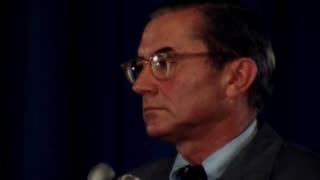 37:00
37:00
The Memory Hole
2 days ago“I think Sy is right" - The CIA Story: Seymour Hersh vs. William Colby Debate (1975)
4891 -
 50:13
50:13
Ben Shapiro
1 hour agoEp. 1979 - Biden Demonstrates He’s a VEGETABLE
6.4K26 -
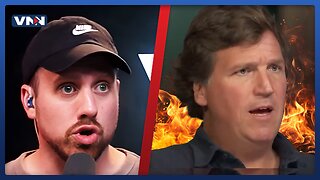 7:58
7:58
Vigilant News Network
1 hour agoTucker Carlson Explains Why He Didn't Get Vaccinated | Beyond the Headlines
31717 -
 LIVE
LIVE
Barstool Yak
3 hours agoThe Yak with Big Cat & Co. Presented by Rhoback | The Yak 6-5-24
746 watching -
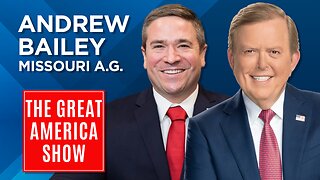 30:10
30:10
Lou Dobbs
2 hours agoThe Great America Show - Biden's Constitutional Crisis
1.86K1 -
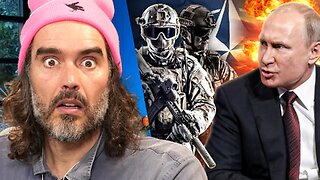 2:20:24
2:20:24
Russell Brand
3 hours agoBREAKING: NATO Prepares For WW3 As Putin Ready For ALL OUT WAR
104K199 -
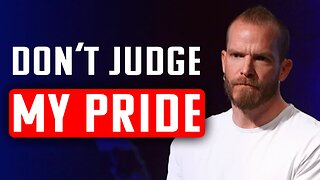 56:53
56:53
Graham Allen
3 hours agoDon’t Judge My Pride | LIVE From Summit Church
16.1K47 -
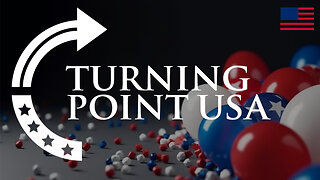 1:59:12
1:59:12
The Charlie Kirk Show
2 hours agoTurning Point Turns 12 + Swamp the Vote | Maloney, Rep. Jordan | LIVE 6.5.24
42.6K22 -
 DVR
DVR
TheAlecLaceShow
1 hour agoDouglas Brunt Interview | Reading, Writing and Raising 3 Children with Megyn Kelly
2.4K3 -
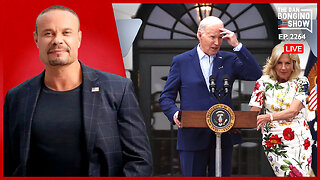 58:28
58:28
The Dan Bongino Show
4 hours agoBiden’s Brain is GONE (Ep. 2264) - 06/05/2024
384K986